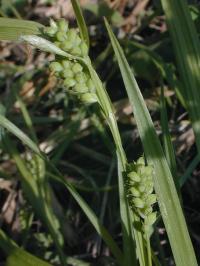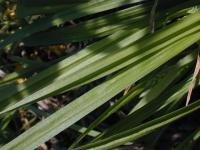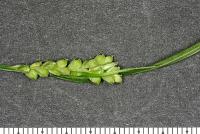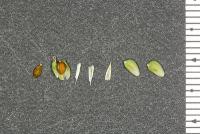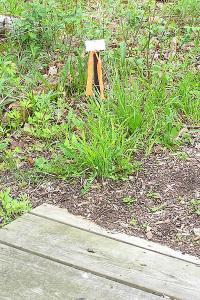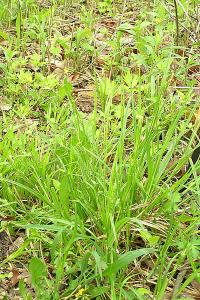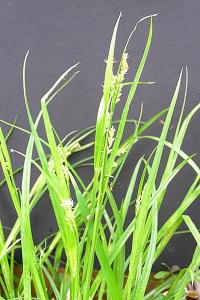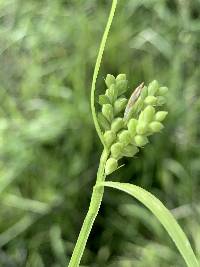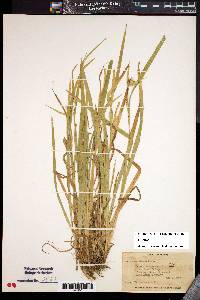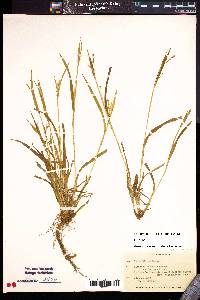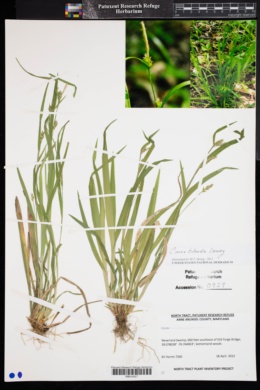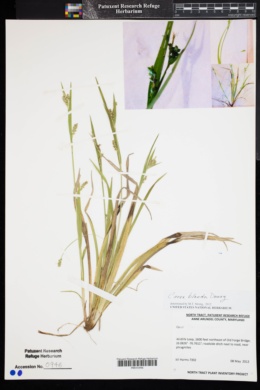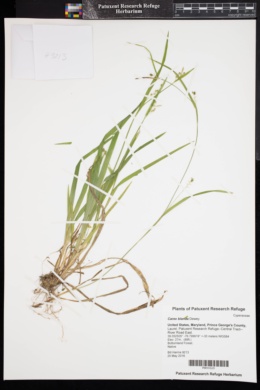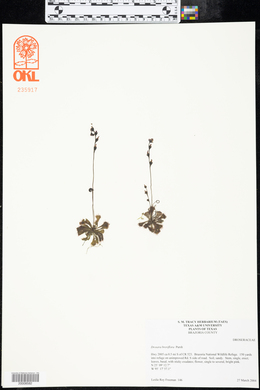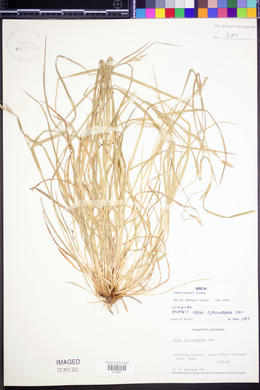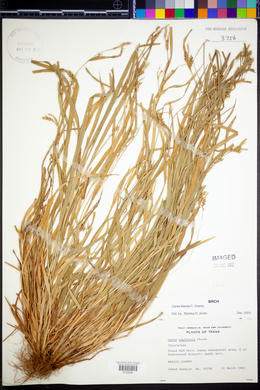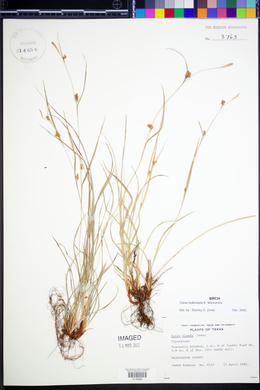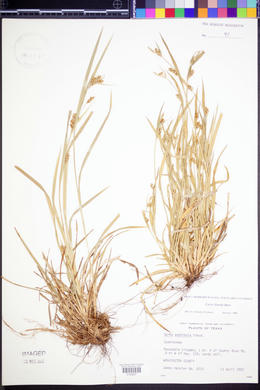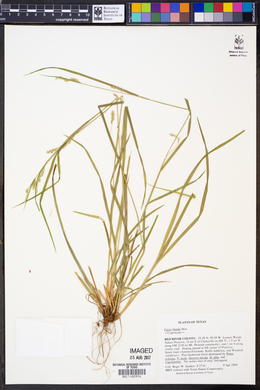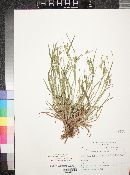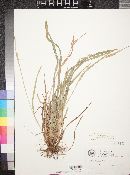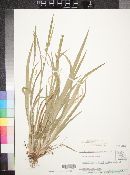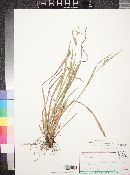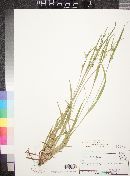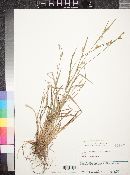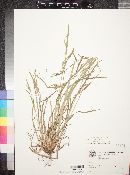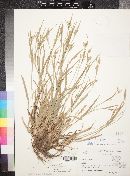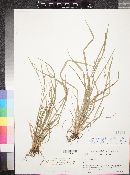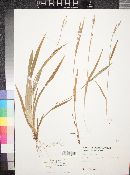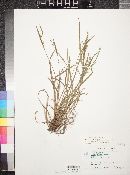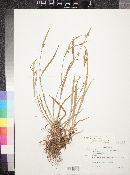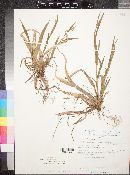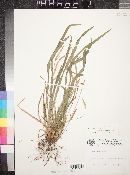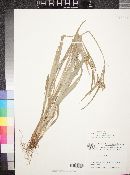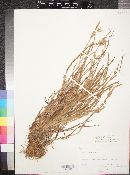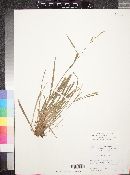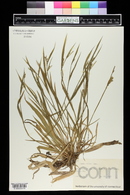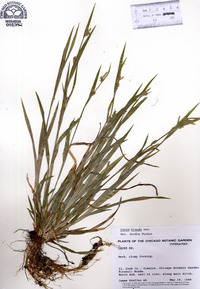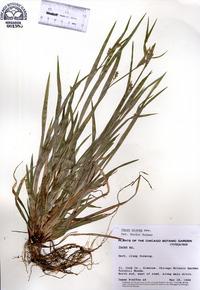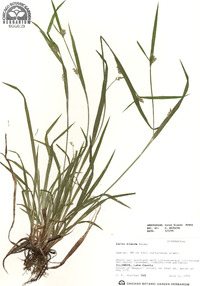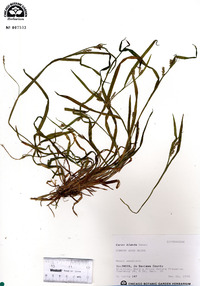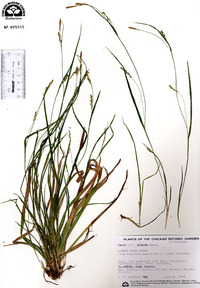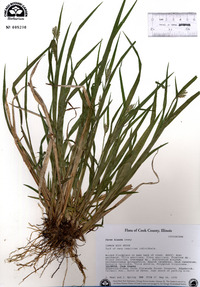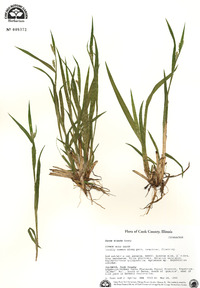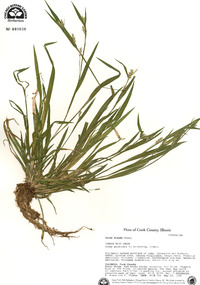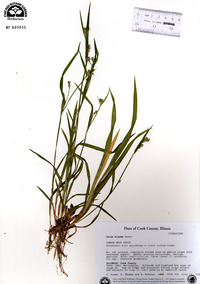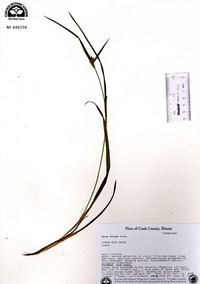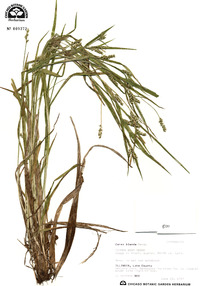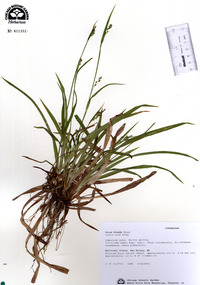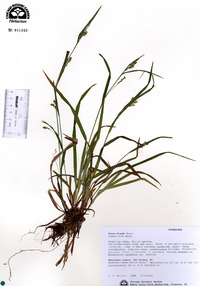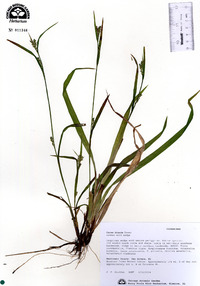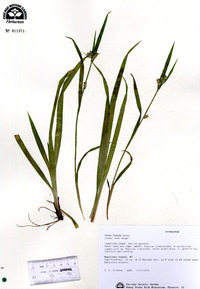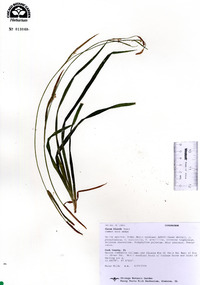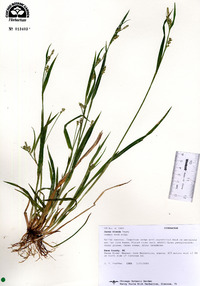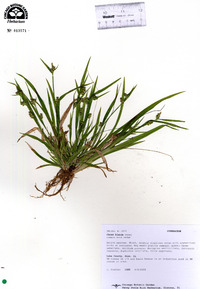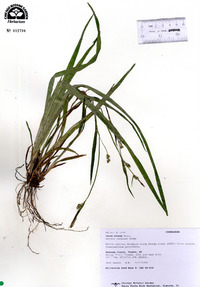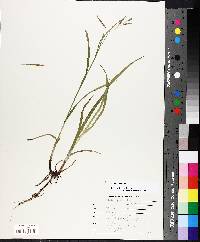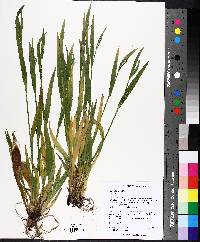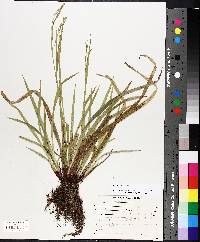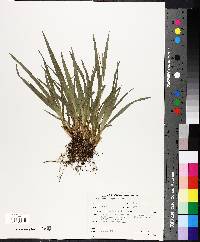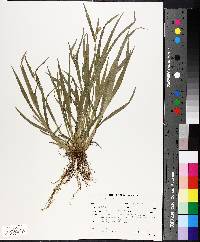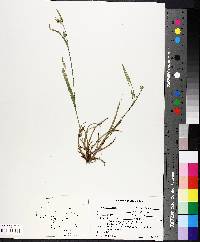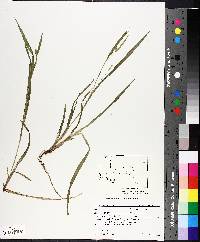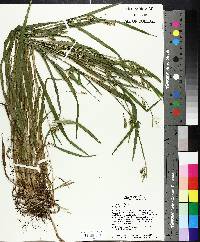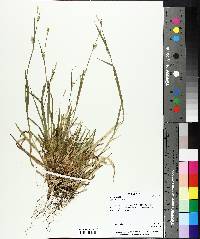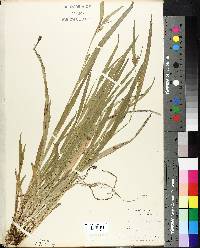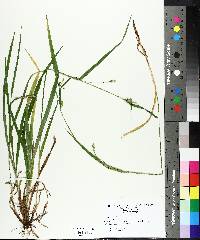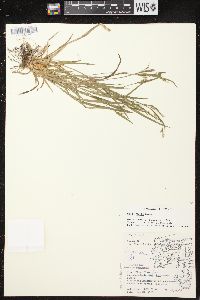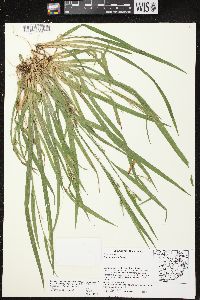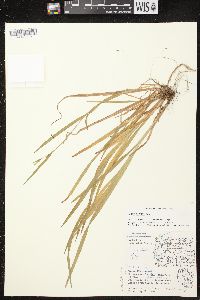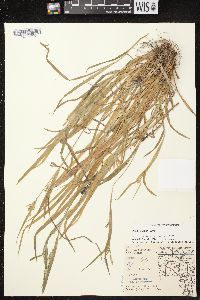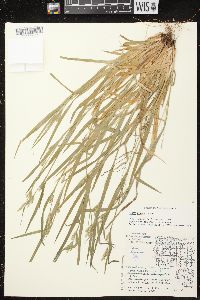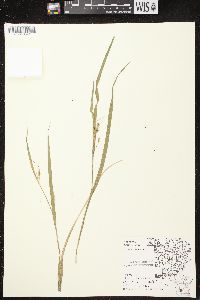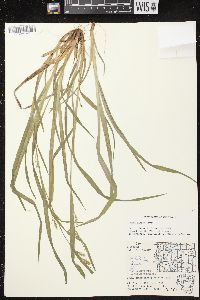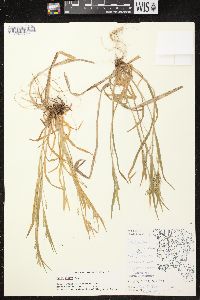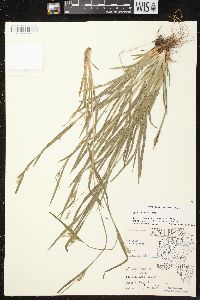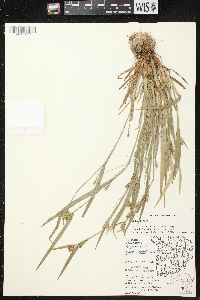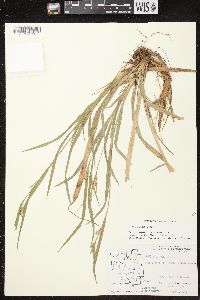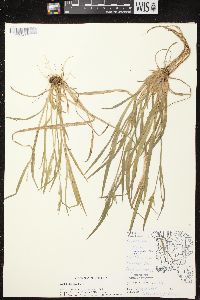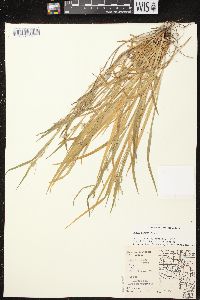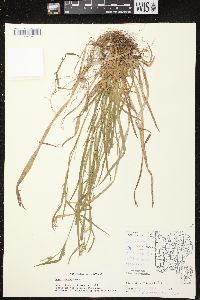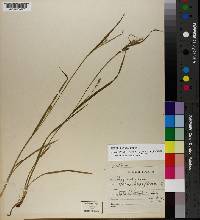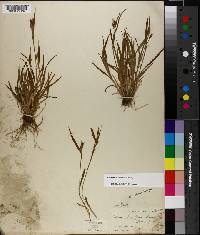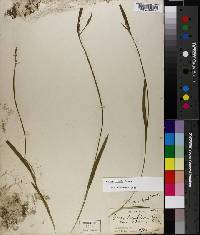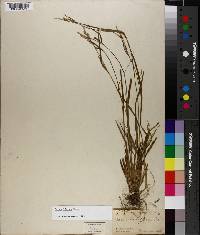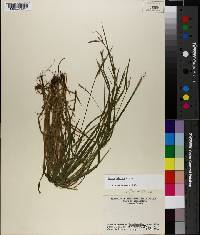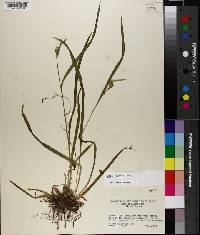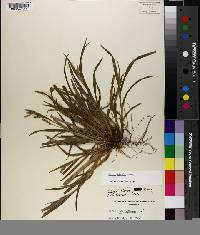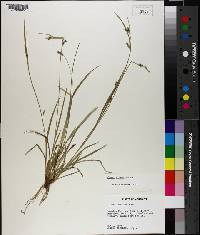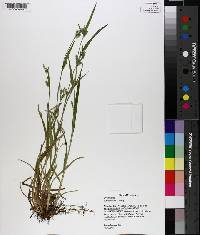Carex blanda
|
|
|
|
Family: Cyperaceae
Eastern Woodland Sedge, more...bland sedge
[Carex laxiflora var. blanda (Dewey) Boott] |
Culms densely tufted, central or lateral, rarely erect, ascending, lax, or, occasionally, decumbent, slightly winged, 14-53 cm × 0.8-1 mm. Leaves: basal sheaths brown or light brown; sheaths 1-48 mm; blades erect, ascending or lax, green, midrib well developed abaxially, lateral veins developed adaxially, flat, 14-36 cm × 1-10 mm, blades of overwintering leaves smooth abaxially. Inflorescences: peduncles of proximal absent; of terminal spike 0-1.7 cm. Bracts 0.9-17 cm × 1-8 mm, bract blade of distal lateral spikes linear, narrower than spikes, not concealing them (viewed from abaxial surface), widest bract blade of distalmost lateral spike 0.5-3.4 mm wide. Spikes 4(-5) per culm; lateral spikes scattered or distal 2 proximate, 15-18 × 3-4 mm; terminal spike overtopping or proximate to proximal pistillate spikes, linear, 9-20 × 1.8-2.4 mm. Pistillate scales 2.8-3 × 1.4-1.6 mm, apex apiculate to aristate, awn to 1.5 mm. Staminate scales 1.8-3.2 × 1.4-1.8 mm, margins hyaline, apex acute or acuminate. Anthers 1.8-2.2 mm. Perigynia 4-18 per spike, closely overlapping, ratio of longer lateral spike length to perigynia number 0.8-1.7, aggregated, ascending, conspicuously (22-)25-32-veined, obovate to elliptic-obovate, 2.5-3.8(-4.1) × 1.3-2.2 mm, 1.5-1.9 times as long as achene bodies; beak abruptly bent, 0.2-0.6 mm. Achenes obovoid, 2.1-3.2 × 0.8-1.8 mm. 2n = 30, 32, 34, 36. Fruiting spring-early summer. Wet, moist or dry, open areas or in deciduous or deciduous-evergreen forests, wide range of soil types, frequently weedy; 0-1000 m; Ont., Que.; Ala., Ark., Colo., Conn., Del., D.C., Fla., Ga., Ill., Ind., Iowa, Kans., Ky., La., Maine, Md., Mass., Mich., Minn., Miss., Mo., Nebr., N.H., N.J., N.Mex., N.Y., N.C., N.Dak., Ohio, Okla., Pa., R.I., S.C., S.Dak., Tenn., Tex., Vt., Va., W.Va., Wis., Wyo. Carex blanda is the most common and widespread of all members of sect. Laxiflorae. It is often locally abundant and capable of being somewhat weedy in areas where it is frequent. It growns in the most diverse environmental and edaphic conditions of all members of sect. Laxiflorae. Plants of C. blanda from drier or wetter habitats usually produce narrower leaves and/or culms than plants from mesic or shaded habitats. Additional research is needed to determine if these are simply expressions due to environment and edaphic conditions or a complex of closely related species or varieties.
Tufted, 2-6 dm; fertile stems triangular and slightly winged, minutely serrulate above; basal sheaths ±brown; lvs of the sterile shoots to ca 10 mm wide, those of the fertile ones a little narrower; angles of the bract-sheaths minutely ciliate-serrulate; terminal spike staminate, 1-2 cm, on a short to elongate peduncle, often overtopped by the uppermost bract; pistillate spikes 3-4, 1.5-2 cm, scattered or the upper 2 approximate, none basal; pistillate scales prominently cuspidate or short-awned; perigynia 4-18, crowded and overlapping, greenish or yellowish-green, 2.5-4 mm, finely many-nerved as well as 2-ribbed, obtusely trigonous, obovoid, abruptly contracted to a short, abruptly bent beak with entire orifice; achene obtusely trigonous; 2n=36, 38, 40. Dry to mesic woods, sometimes weedy; Me. and s. Que. to N.D., s. to Ga., nw. Fla., and Tex. (C. amphibola; C. laxiflora var. b.) Gleason, Henry A. & Cronquist, Arthur J. 1991. Manual of vascular plants of northeastern United States and adjacent Canada. lxxv + 910 pp. ©The New York Botanical Garden. All rights reserved. Used by permission. From Flora of Indiana (1940) by Charles C. Deam Very common throughout the state, doubtless occurring in every county. In woods of all types it is the commonest species of this section of the genus. The other Indiana species of the C. laxiflora group are rarely found in either very sandy or (except C. gracilescens) very moist woods as C. blanda frequently is. ...... Indiana Coefficient of Conservatism: C = 1 Wetland Indicator Status: FAC |
|
|
|

![Back of leaf sheath [J. Sturner JS820 (MOR)] - The Morton Arboretum, East Side; DuPage Co., IL Carex blanda image](http://carex.lifedesks.org/image/view/16)
![Achene [J. Sturner JS820 (MOR)] - The Morton Arboretum, East Side; DuPage Co., IL Carex blanda image](/imglib/h_seinet/seinet/misc/201403/imgid-296853_tn.jpg)
